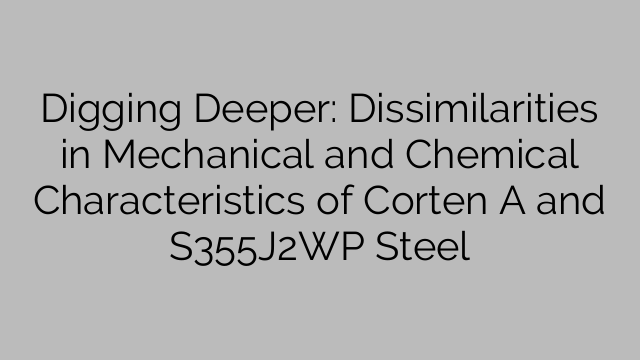Steel is a versatile material that is widely used in various industries and applications due to its strength, durability, and aesthetic appeal. However, not all steels are created equal, and understanding the differences between different grades of steel is essential for making informed decisions.
Two popular types of steel that are often compared are Corten A and S355J2WP. While they may appear similar at first glance, there are significant dissimilarities in their mechanical and chemical characteristics that make them suitable for specific purposes.
Corten A is a weather-resistant steel that was first developed in the 1930s by the United States Steel Corporation. It is designed to form a protective patina layer when exposed to the elements, which makes it highly resistant to corrosion. This unique characteristic makes Corten A ideal for outdoor structures such as bridges, building facades, and sculptures. The mechanical properties of Corten A include a minimum yield strength of 355 N/mm² and a tensile strength of 470-630 N/mm². Its chemical composition consists of iron, chromium, copper, nickel, and phosphorus.
On the other hand, S355J2WP is a structural steel grade with improved atmospheric corrosion resistance. It is part of the EN 10025-5 standard and contains alloying elements such as copper, nickel, and chromium. S355J2WP is commonly used in welded bridges, buildings, and other structural applications exposed to harsh outdoor environments. Its mechanical properties include a minimum yield strength of 355 N/mm² and a tensile strength of 510-680 N/mm².
One of the key differences between Corten A and S355J2WP is their corrosion resistance mechanism. Corten A forms a protective patina layer on its surface, which prevents further corrosion by acting as a barrier between the steel and the environment. In contrast, S355J2WP relies on its alloying elements, particularly copper, to provide corrosion resistance. The addition of copper creates a protective oxide layer that slows down the corrosion process.
Another distinction lies in their aesthetic appeal. Corten A is often prized for its distinctive rusty appearance, which adds character and charm to architectural designs. Over time, it develops a deep reddish-brown patina that changes with the weathering process. This characteristic makes Corten A a popular choice among architects and designers looking for a weathered, industrial aesthetic. S355J2WP, on the other hand, has a more uniform, metallic appearance with no particular weathering characteristics.
When choosing between Corten A and S355J2WP for a specific project, it is crucial to consider the intended application, environmental conditions, and desired aesthetic outcome. While both steels offer excellent corrosion resistance, Corten A excels in outdoor structures exposed to harsh weather conditions and often requiring a distinctive rusty appearance. S355J2WP, on the other hand, is preferred for structural applications where uniformity and strength are prioritized.
In conclusion, Corten A and S355J2WP are two different types of steel with distinct mechanical and chemical characteristics. Their suitability for specific applications depends on factors such as environmental conditions, desired aesthetics, and structural requirements. By understanding the dissimilarities between these two steels, professionals can make informed decisions and ensure the success of their projects.

